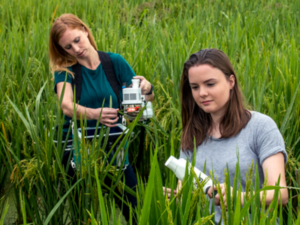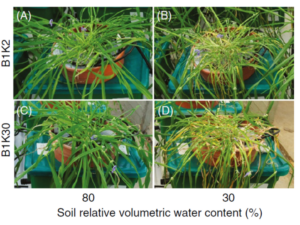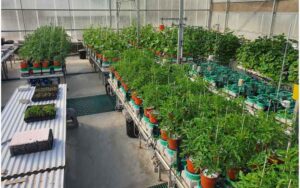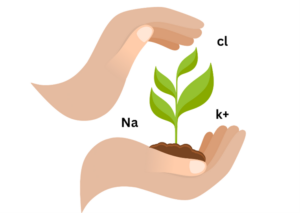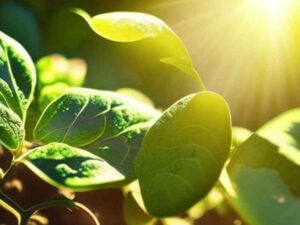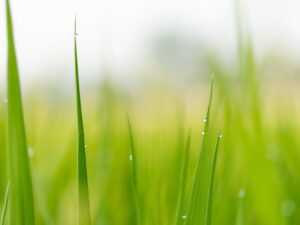Biomass, the organic material derived from living organisms, serves as a fundamental component of the Earth’s ecosystems and plays a crucial role in sustaining life. Among the diverse sources of biomass, plants stand out as the primary producers, converting sunlight, water, and carbon dioxide into energy-rich compounds through photosynthesis. This intricate process not only drives the planet’s energy cycle but also contributes significantly to various sectors, including energy production, agriculture, and environmental conservation. In this exploration of biomass in plants, we delve into the mechanisms, applications, and implications of this vital biological phenomenon.
Photosynthesis: Nature’s Energy Factory
At the heart of biomass production in plants lies photosynthesis, a remarkable biochemical process that has shaped life on Earth for billions of years. Within specialized structures called chloroplasts, plants utilize the energy of sunlight to convert carbon dioxide and water into glucose and oxygen. This process not only fuels the plant’s growth but also results in the accumulation of organic matter in the form of biomass. The energy captured during photosynthesis is stored within the plant’s cells and can be harnessed for various purposes, making plants an invaluable resource for both natural ecosystems and human endeavors.
The creation of biomass in plants is a complex and essential process that serves as the foundation of life on Earth. Biomass, the organic matter derived from living organisms, is primarily generated through the process of photosynthesis. This intricate process, powered by sunlight, transforms carbon dioxide and water into energy-rich molecules, which not only fuel the plant’s growth and development but also provide the basis for entire ecosystems and human societies.

The sugars produced through photosynthesis serve as the primary source of energy for the plant. This energy is utilized for various purposes, including growth, reproduction, and defense against environmental stresses. The sugars are transported throughout the plant via the vascular system, primarily the phloem. Some of the energy-rich molecules are stored as starch, a complex carbohydrate, in specialized storage organs like roots, tubers, and seeds.
Types of Biomass in Plants
Biomass in plants takes various forms, each serving distinct ecological and societal functions:
Above-Ground Biomass: A Verdant Tapestry of Energy and Life- Above-ground biomass in plants constitutes the visible components that emerge from the soil and reach skyward. This intricate tapestry of stems, leaves, flowers, and fruits represents not just the plant’s physical form but also a reservoir of energy and life that sustains ecosystems and human societies alike. Understanding the significance, dynamics, and multifaceted applications of above-ground biomass provides insights into the intricate workings of nature and offers solutions to pressing environmental and developmental challenges.
Components of Above-Ground Biomass
- Stems and Trunks: The sturdy structures of stems and trunks provide support for the plant and facilitate the transport of water, nutrients, and photosynthates (products of photosynthesis) throughout the plant. In trees, these structures can persist for decades, accumulating biomass over time.
- Leaves: Leaves are the primary sites of photosynthesis, where sunlight is converted into energy-rich compounds that fuel the plant’s growth. The arrangement, shape, and surface area of leaves influence the plant’s ability to capture sunlight and exchange gases with the atmosphere.
- Flowers: Flowers are reproductive structures that facilitate pollination and seed production. They contribute to genetic diversity and are essential for the continuation of plant species.
- Fruits: Fruits develop from fertilized flowers and encapsulate seeds. They serve as mechanisms for seed dispersal, often attracting animals that consume the fruits and spread the seeds across the landscape.
Below-Ground Biomass: Unveiling the Hidden Foundation of Ecosystems: Beneath the Earth’s surface, a hidden world of life and energy thrives. Below-ground biomass, encompassing plant roots and their associated structures, forms the foundation upon which ecosystems are built. While often concealed from view, this hidden realm plays a pivotal role in shaping soil health, nutrient cycling, carbon storage, and the overall functioning of ecosystems. Understanding the intricacies and significance of below-ground biomass sheds light on the complex interactions that sustain life on our planet.
The Role of Below-Ground Biomass: Roots as Anchors: The roots of plants serve as anchors, securing them to the soil. They prevent erosion by stabilizing the soil and reducing the risk of landslides.
Nutrient Uptake: Roots are conduits for nutrient uptake from the soil. As plants absorb water, they also draw in essential minerals that support growth, reproduction, and overall health.
Carbon Storage: Below-ground biomass contributes to carbon storage in the soil. As roots die off and decompose, they add organic matter to the soil, sequestering carbon and enhancing its fertility.
Soil Structure: Roots play a crucial role in maintaining soil structure by creating pores and channels as they grow and decay. These pathways allow for water infiltration and the movement of gases, benefiting soil aeration and water retention.
Microbial Relationships: Root exudates, compounds released by roots into the soil, foster symbiotic relationships with beneficial microorganisms. These relationships can enhance nutrient availability, disease resistance, and overall plant health.
Soil Health: The presence of below-ground biomass contributes to soil health and fertility. Root exudates nourish soil microorganisms, which in turn aid in nutrient cycling and organic matter decomposition.
Below-Ground Biomass in Ecosystems
- Water Regulation: The intricate network of roots helps regulate water flow within ecosystems. They stabilize soil structure, reducing erosion and promoting water infiltration.
- Carbon Sequestration: As roots die and become incorporated into the soil, they contribute to carbon sequestration. This stored carbon plays a vital role in mitigating climate change by removing carbon dioxide from the atmosphere.
- Biodiversity: Below-ground biomass supports a diverse array of organisms. Microorganisms, insects, and small mammals depend on the organic matter and shelter provided by roots for their survival.
Residues:
Even in death, plants continue to play a vital role. Residues, the remnants of plant material that have fulfilled their lifecycle, contribute significantly to the resilience and regeneration of ecosystems. These seemingly unremarkable fragments, whether fallen leaves, decaying branches, or decomposed flowers, are far from mere waste. Residues are essential components of nutrient cycling, organic matter enrichment, and habitat creation, showcasing the intricate and harmonious relationships that sustain life on Earth.
The Lifecycle of Residues
- Fallen Leaves: As trees shed their leaves, they create a rich carpet of organic matter on the forest floor. These fallen leaves accumulate over time, forming a layer known as the leaf litter. This layer becomes a haven for various organisms that contribute to nutrient cycling
- Decomposing Branches: When branches break or fall, they provide a source of woody material that gradually decomposes. Fungi, bacteria, and other decomposers break down these branches, releasing nutrients back into the soil.
- Decaying Flowers and Fruits: Flowers and fruits that have fulfilled their reproductive purpose begin to decay, adding to the organic matter in the ecosystem. This process not only enriches the soil but also supports the growth of new plants.
Importance of Residues in Ecosystems
- Nutrient Cycling: Residues are integral to nutrient cycling within ecosystems. As they decompose, they release essential nutrients such as nitrogen, phosphorus, and potassium back into the soil. These nutrients then become available to plants, fostering growth and supporting the entire food web.
- Soil Enrichment: The decomposition of residues contributes to soil fertility and structure. As organic matter breaks down, it binds soil particles, improving water retention, aeration, and nutrient availability.
- Habitat Creation: Residue layers provide habitats for a diverse range of organisms, from insects and worms to small mammals. These microhabitats offer protection from predators, shelter from extreme weather, and breeding sites.
- Carbon Sequestration: While the carbon stored in residues is not as long-lasting as that stored in deep soil, it still contributes to carbon sequestration. This process helps mitigate the impacts of climate change by reducing the amount of carbon dioxide in the atmosphere.
Sustainable management of biomass production is crucial to ensure the health of ecosystems and meet human needs. Overexploitation, habitat destruction, and improper land management can disrupt biomass production and lead to environmental degradation. As we seek to balance our reliance on biomass resources with the preservation of natural systems, understanding the intricate processes that drive biomass creation in plants becomes essential.
In essence, the process of creating biomass in plants is a testament to the remarkable alchemy of nature, where sunlight is transformed into energy, nourishing life in all its forms. As we continue to uncover the mysteries of this process and harness its potential for sustainable development, we embark on a journey of harmonizing with the natural world to secure a resilient future for both the planet and its inhabitants.
How does the PlantArray system can measure the plant biomass?
The main sensor being used to measure the biomass of the plant is a scale (lysimeter). All pots, including the plants and the soil, are being placed on the scales and measured at the beginning of each experiment. Throughout the course of the experiment, the amount of water and plant growth are the only elements which are changing. During each day, the system automatically brings the soil to a state of full field capacity, while draining the excess water. The system then meticulously records the daily weight changes. The variation between two consecutive days accurately indicates the daily growth rate of the plant and consequently its wet biomass.

The PlantArray system streamlines the search for optimal Plant Water Use Efficiency (WUE). Equipped with advanced tools, the platform facilitates high-throughput phenotyping of plants across diverse environments. PlantArray’s strength lies in its capacity to simultaneously assess large plant populations, accelerating data collection and enabling efficient screening of genotypes or treatments. By measuring parameters like biomass, stomatal conductance, transpiration rate, root water influx, the system unveils insights into water use efficiency and water-use-efficiency under varying conditions. Furthermore, researchers can tailor the setup to simulate specific environments, aiding the identification of water-efficient plants across diverse stress scenarios.

